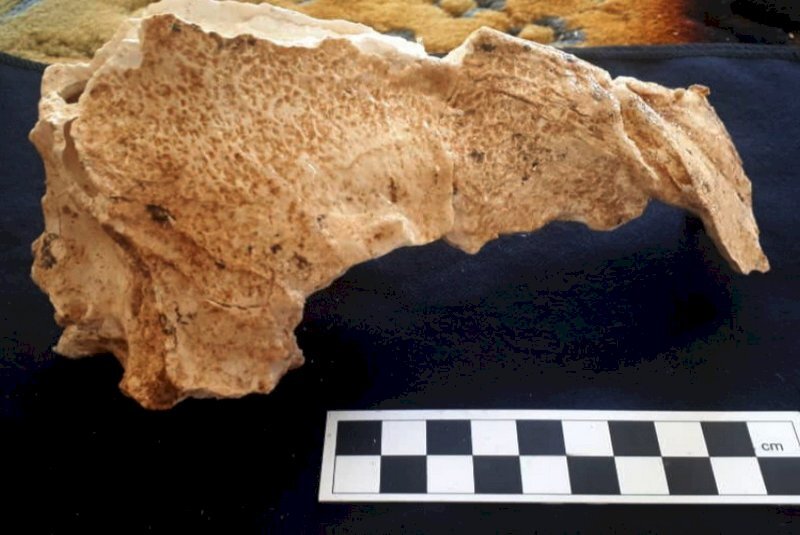INSUBCONTINENT EXCLUSIVE:
during a recent excavation survey, CHTN reported on Tuesday.A team of archaeologists co-led by Iranian archaeologist Hamed Vahdati and
French paleoanthropologist Gilles Berillon has recently completed the third round of excavation project on the historical site.An upper part
of the skull of an extinct hyena called a cave hyena, which lived between 500,000 and 11,000 years ago and was first reported from Iran, has
been discovered in the region during a recent excavation survey, CHTN quoted Vahdati as saying.Hand tools with carvings older than the
Middle Paleolithic were found in this area, indicating the presence of other human species besides ancient, intelligent man and Neanderthal
week Vahdati announced that evidence found by the team suggested that Qal-e Kord Cave is the oldest human settlement in Iran discovered so
far.According to preliminary results, the cave is over 400,000 years old, making it the oldest human settlement in the country, he added.So
far, two types of extinct prehistoric horses, deer, brown bear, and rhinoceros have been identified in the animal remains found in the cave,
he mentioned.Last year, the tourism ministry announced that a fossilized tooth, previously found in the cave, could date back 100,000
years.The organ was examined in two laboratories in France and the United States, and the results of radiocarbon dating experiments showed
that it relates to the oldest-known Neanderthal civilization in Iran.In November 2018, the first season of the joint Iran-France
archeological exploration led to the discovery of over 6,000 cultural pieces in the area
It also yielded bone remains of horses, deer, bears, and many stone tools belonging to the Middle Paleolithic period (between 200,000 to
40,000 years ago).In the second season of the project in 2019, archaeologists discovered the remains of a horse, which they believed to be
hunted by Neanderthals in the cave.A 2019 study published in the Journal of Human Evolution suggests that Neanderthals were roaming at the
Iranian Zagros Mountain sometimes between 40 to 70 thousand years ago.Until the late 20th century, Neanderthals were regarded as
genetically, morphologically, and behaviorally distinct from living humans
However, more recent discoveries about this well-preserved fossil Eurasian population have revealed an overlap between living and archaic
humans.Neanderthals lived before and during the last Ice Age of the Pleistocene in some of the most unforgiving environments ever inhabited
They developed a successful culture, with a complex stone tool technology, that was based on hunting, some scavenging, and local plant

